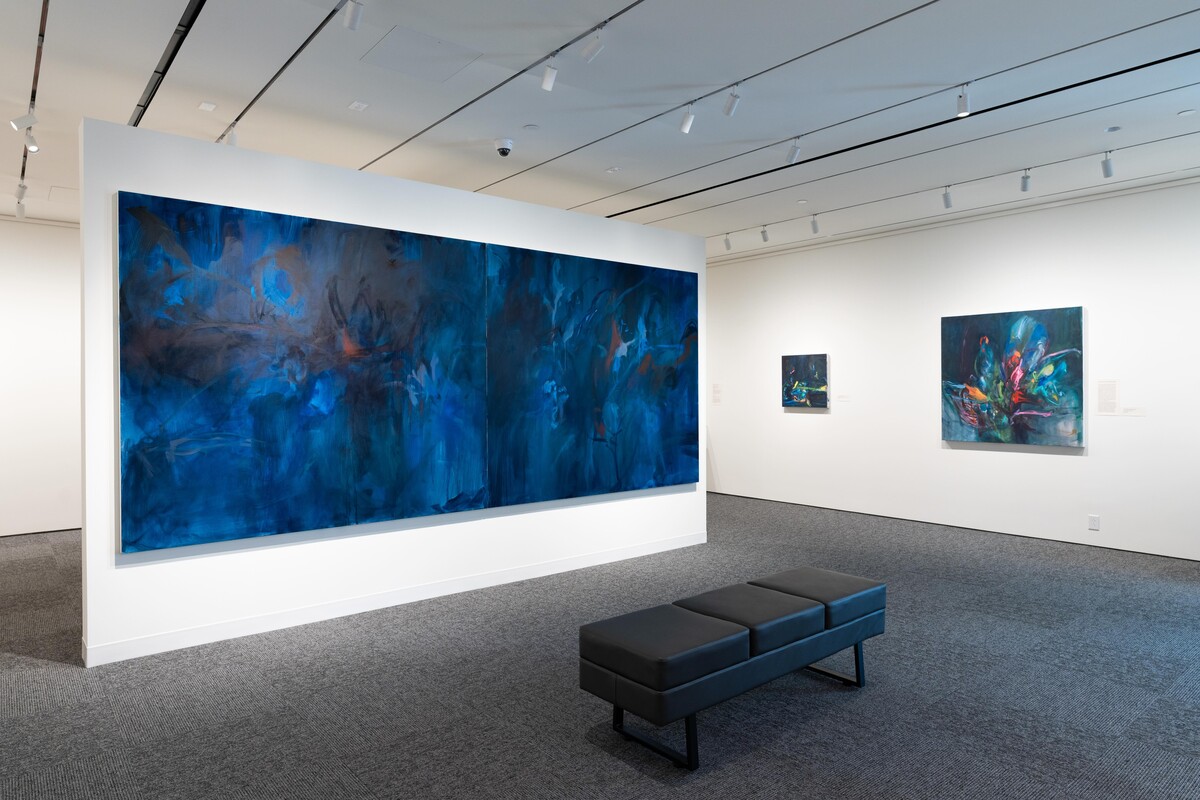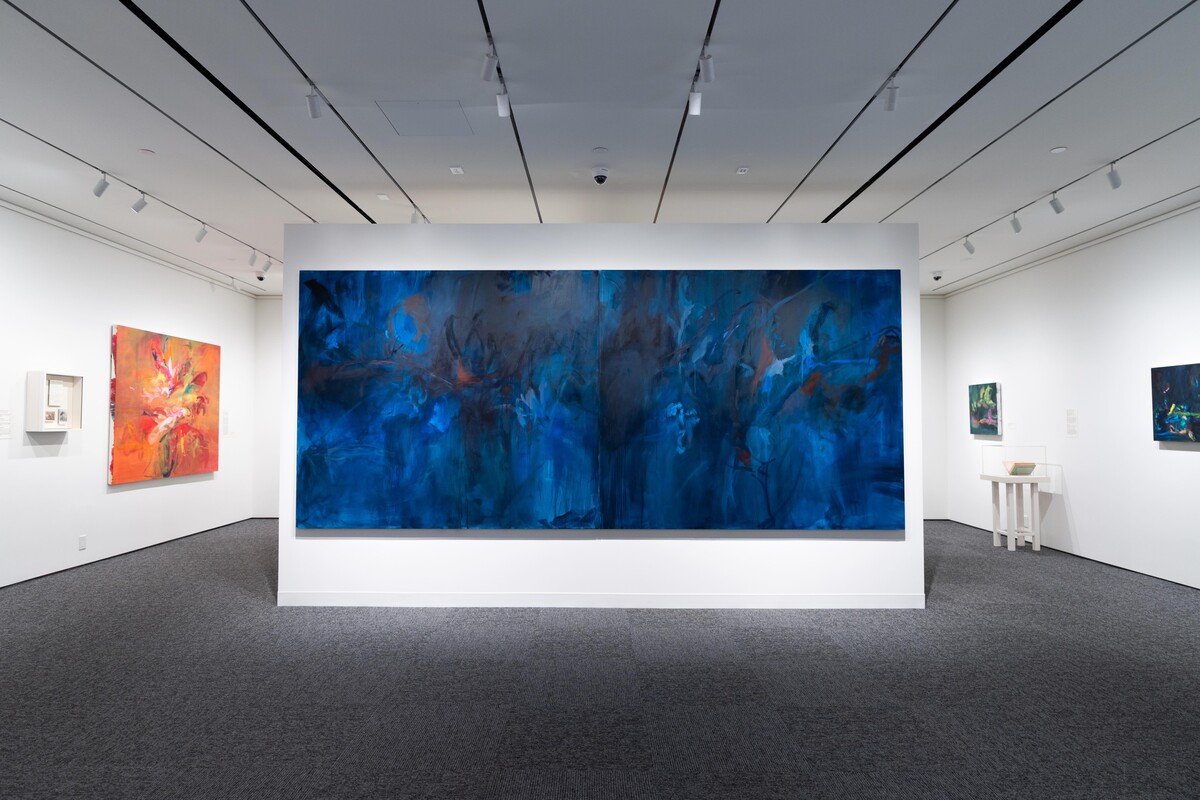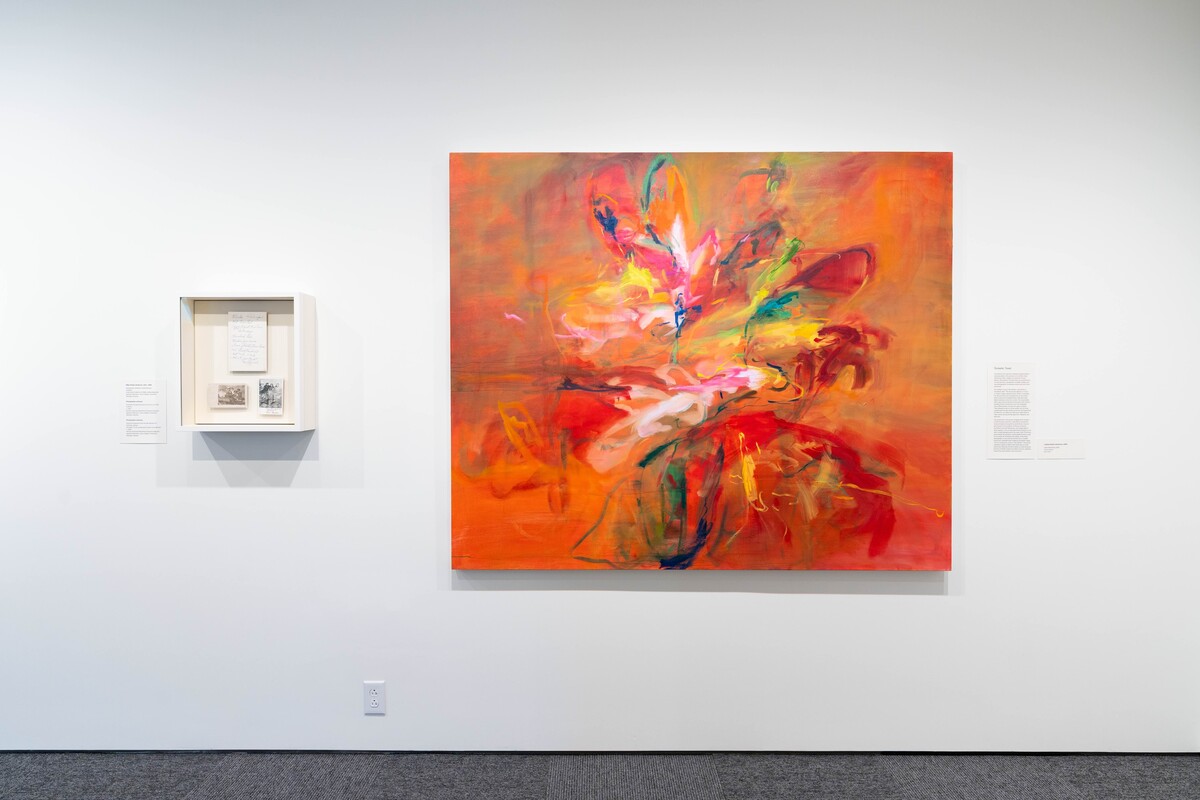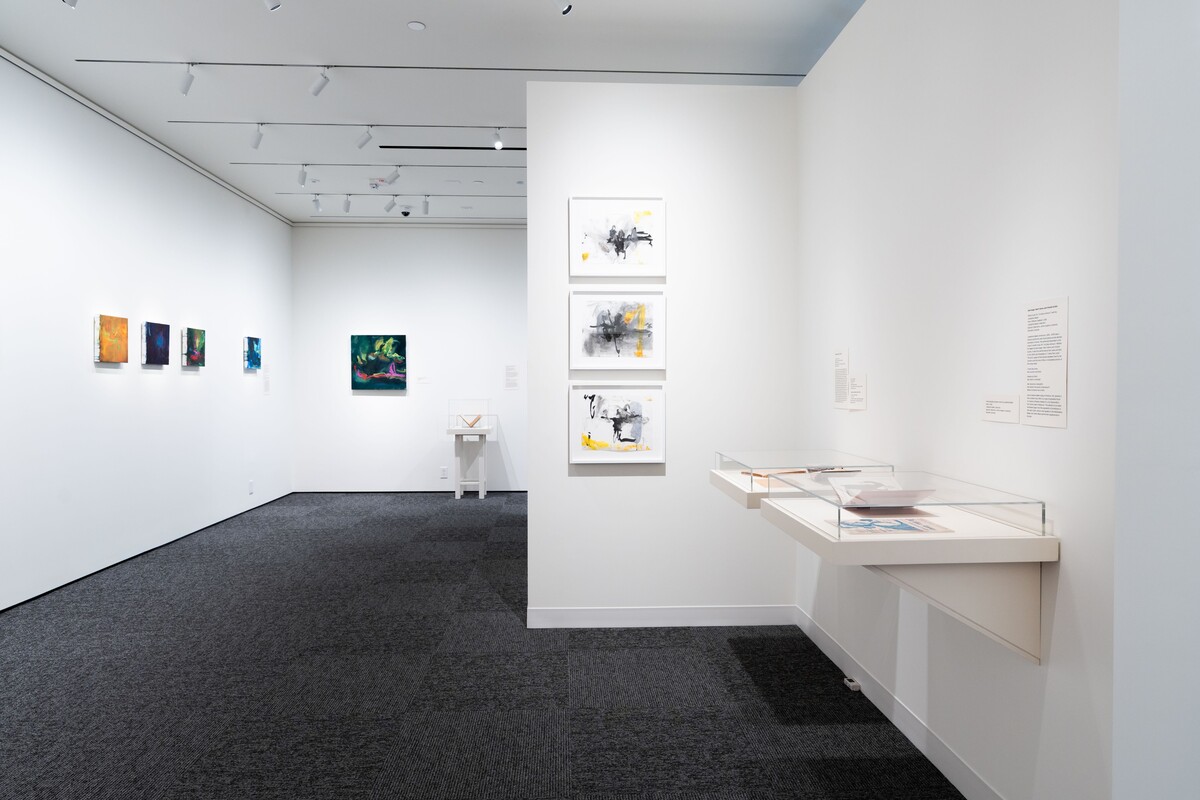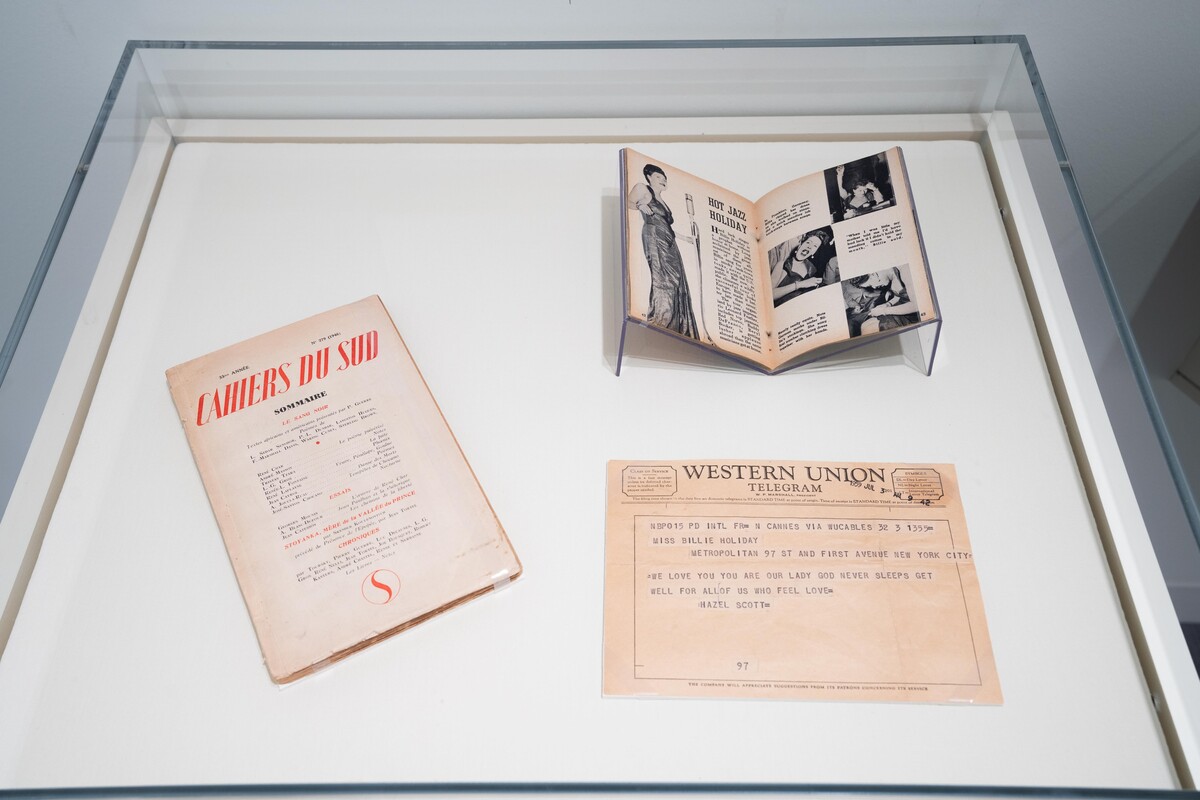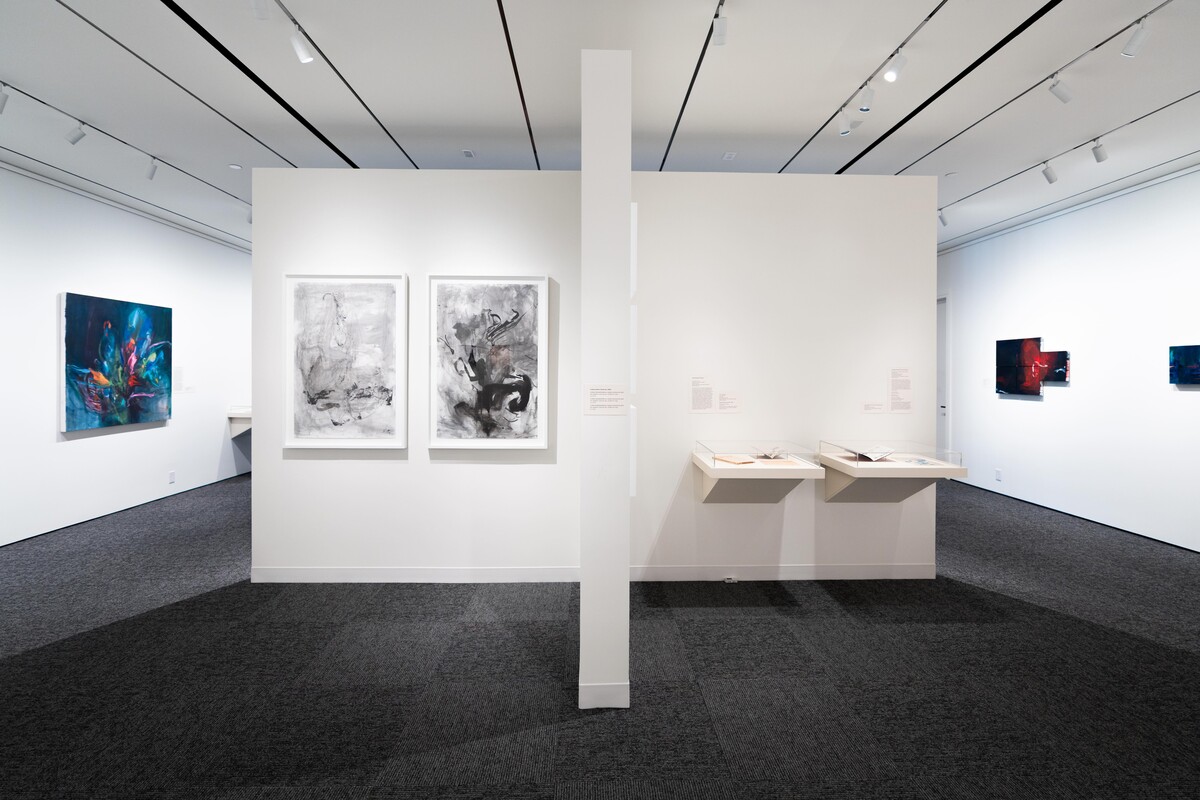
This fall, the Irene and Richard Frary Gallery at the Johns Hopkins University Bloomberg Center in Washington, D.C. will present Ceremony, the first institutional solo exhibition for artist Lindsay Adams (b. 1990), who was most recently commissioned to create a site-specific installation for the new Obama Presidential Center in Chicago. Drawing on Adams’ background in international studies and cultural anthropology, the exhibition explores the histories of Black movement, migration, and world-building by placing new works in conversation with never-before-seen ephemera from the collection of Johns Hopkins Sheridan Libraries. On view from October 29, 2025, through March 7, 2026, Ceremony invites visitors to imagine alternate spaces of joy, safety, and reflection through Adams’ gestural brush strokes that unfurl into abstract landscapes.
Centered around Kind of Blue (1959) (2024), a large diptych named after Miles Davis’ iconic album, and the only preexisting, though never-before-seen, work in the show, the exhibition is composed of 14 paintings and five works on paper, shown alongside nearly 20 archival objects that place the themes of Black mobility running through Adams’ work into historical context. Resonating with and informing Lindsay’s work, rare books and personal correspondence from historical figures such as Langston Hughes, Hazel Scott, Josephine Baker, and Billie Holiday, as well as objects from unknown individuals underscore the deep historical connection between artistic production and Black freedom. Writings from Adams’ personal notebook will also be displayed in the gallery, and visitors are invited to offer their thoughts on postcards in return, to become part of the space and “join the ceremony.”
“The exhibition unites physical fragments of the Black experience with Lindsay’s conceptual meditations on that same history, creating an impermanent space for togetherness, reflection, and imagination,” said Ceremony curator, Claudia M. Watts. “Visitors are invited to honor the past while envisioning new futures. Lindsay’s works become a site of memory, where themes of Black spatial refusal and worldbuilding guide her hand toward a vision of collective existence. Inspired by Sylvia Wynter’s The Ceremony Found and Sarah Cervenak’s Black Gathering: Art, Ecology, Ungiven Life, the exhibition stands as a testament to an unending journey for solace, safety, a place to celebrate, a moment to grieve, and a chance to dream.”
Engaging with formal and conceptual notions of togetherness, the exhibition is organized around three major themes: domestic world-building, international migration, and movement in the United States. Each examines the physical and ineffable spaces in which the Black community has exercised self-determination and agency within a world that has, throughout history, imposed restrictions on them.
“By approaching the canvas as a site, I scrape, add, and excavate layers of paint to imagine places for myself and those like me,” said Lindsay Adams. “Through abstraction, I create spaces of belonging untethered from geography, rooted instead to an ephemeral core—spaces where imagination becomes our most concrete tool for progress. Ceremony not only reflects histories of Black liberation; it also inspires the creation of new ones.”
Adams’ practice includes painting and drawing, using rigorous conceptual investigation as the starting point for her vivid canvases. She uses both abstraction and representation to construct layered compositions that reflect both personal and communal narratives. By layering gestural and chromatic elements, Adams examines the fluid and changing nature of time and memory. Many of Adams’ works are inspired by Black musical histories and compositions, literature, and poetics; building upon a tradition begun by African American abstractionist painters in the mid-20th century who connected their work to
visual representations of jazz and poetry, drawing on the form’s improvisational nature. To complement the exhibition, the installation will be accompanied by a curated soundscape from Sean Jones, the Richard and Elizabeth Case Chair in Jazz Studies at the Peabody Institute of The Johns Hopkins University. The playlist, which further reflects on the historic and ongoing connections between Black artistic and cultural production, will be available for download in the gallery through the Bloomberg Connects app.
“The Irene and Richard Frary Gallery at the Hopkins Bloomberg Center is a space where art, scholarship, and community converge to spur discovery and dialogue,” said Cybele Bjorklund, Executive Director of the Hopkins Bloomberg Center. “This exhibition brings together expertise from across Johns Hopkins University by uniting international studies, jazz music and traditions, and relevant items from our extensive, rare collections.”
“Exhibiting the work of Lindsay Adams, an artist who was raised in the Washington, D.C. area, illustrates the gallery’s ability to function as a space where the cultural and historic threads of the neighborhood are both celebrated and reimagined,” said Caitlin Berry, Director of the Irene and Richard Frary Gallery. “Through Lindsay’s evocative abstractions, in dialogue with rare archival material from JHU Sheridan Libraries, the exhibition underscores how art can honor history while also becoming—and nurturing— spaces of belonging.
Furthermore, the presentation is curated by Claudia M. Watts, an independent curator who hails from Baltimore County and has been shaped by her time there. By connecting creatives from the broader Baltimore and Washington, D.C. communities, the exhibition represents our mission at Johns Hopkins to build bridges between the cities in which the University has a footprint through programming at the nexus of art and culture.”
Ceremony is the first solo body of work to be exhibited at the Irene and Richard Frary Gallery, which was inaugurated in October 2024. Advance reservations are requested, and admission to the gallery is free and open to the public.
